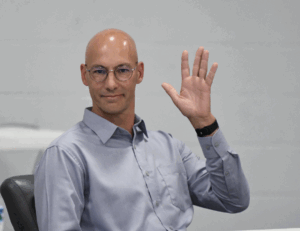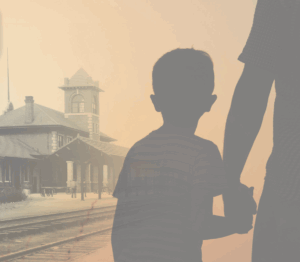
School Board: No Plan A until second semester
Wayne County Public Schools needs answers — and quickly — about whether parents will be sending their elementary-age students back to face-to-face instruction.
The Board of Education discussed during its special meeting Wednesday afternoon the potential implementation of Gov. Roy Cooper’s recent order to allow students in kindergarten through fifth grade to return to classrooms under Plan A.
But while Cooper now allows students to return Oct. 5, after much discussion, and two votes, the board decided to implement the return after the first semester, which would mean students would remain in the hybrid Plan B model — or the state-mandated Virtual Academy — until after Christmas break.
Board Chairman Chris West raised the issue of considering the later start date after hearing discussions about the obstacles the district would face in making yet another transition.
Time for teachers and administrators to get ready and making sure students’ transition is easier are the reasons to support the delay, he said.
“These kids do not need all this inconsistency,” the board chairman said.
Other issues WCPS leaders said must be considered in moving from Plan B to A included everything from transportation and what do to about staffing and classes while managing virtual and face-to-face instruction to whether to include fifth-graders who are housed at middle schools in a Plan A return and how much all of this is going to cost and how much time would be needed to get it all in place.
West said at the beginning of the meeting that switching to Plan A is not a “snap.”
“They need time to do what they need to do,” he said.
During the discussion of the motion to start Plan A for kindergarten through fifth grade at the end of the semester, vice chairman Jennifer Strickland said that she understood the stresses that teachers and staff face. But she said that while Plan B might be working, it is not giving the students what they need.
“We need to get students back in the building as soon as possible,” she said. “If our focus is the education of the children, we need to move into Plan A, period.”
It is time, she said, to let the community decide.
“We need to put the decision back in the hands of the parents,” Strickland said.
So, if a parent doesn’t feel comfortable with their children returning to a non-socially distanced classroom or is worried about putting that child on a bus, he or she can choose the virtual option.
Burden said that she agreed with Strickland that getting the students back in school is important, but added that there is another consideration, too — making sure the education they are receiving is effective and operations move smoothly.
“All I am asking is for people to have time to make it work,” she said.
Board member Ven Faulk said that his concern is getting children back in the classroom, too, adding that there is no clear, right choice.
In earlier discussions about the return date, board member Dr. Joe Democko said that his concern is that the longer Wayne County children stay out of school, the more education they are losing.
“The world is moving on,” Democko said, adding that private schools are back and others are considering making the transition to Plan A soon.
He is worried, he said, that North Carolina children and Wayne County children will be at a disadvantage.
Burden pointed out that one of the private schools Democko referenced, Wayne Christian, had to close earlier this month because of a COVID-19 cluster.
In the end, the board gave administrators the extra weeks they said they needed to get the job done, with the understanding that “all of this could change” if the governor issues new mandates or decides to order a return under Plan A.
The vote was 4-3 in support of the second semester start date, with Strickland, Faulk and board member Wade Leatham voting no.
Earlier in the meeting, the board also decided to let the district keep its current schedule — shortened days and Wednesdays for virtual learning (four days on-site and one day for virtual learning). (The measure passed 6-1 vote, with Len Henderson voting no.)
Now, the district leadership and the board members say they need to know as soon as possible how many parents are going to be looking at sending their children back to face-to-face learning and if they will need transportation to get to school.
Public relations and communications director Ken Derksen said the district is preparing a survey to ask parents about their intention. The difference this time is that the survey will be done by teachers — one on one.
“We are going to work up a script,” Derksen said. “Every single child will be called.”
That means any family with a student in kindergartener through fifth grade will receive a call asking them about their preference should the district return to school under Plan A.
Derksen added that if a parent does not receive a call in the next couple of days, he or she should contact his or her child’s school.
Parents of some students in sixth through eighth grades might also receive a call if they are in one of the five schools that have fifth-graders in their middle schools, Interim Superintendent Dr. James Merrill said.
Those schools include — Brogden, Greenwood, Spring Creek, Mount Olive and Grantham middle schools.
The question is that while the governor has allowed fifth-graders to return under Plan A, students in sixth through eighth grade must continue under Plan B or virtual.
The board is considering questions involving everything from when to start the change and how to get those students into classrooms.
At its meeting, the board addressed several concerns.
• A motion by Henderson to require social distancing in classrooms under Plan A died for a lack of a second and because several Central Office staff members, including Merrill, said Plan A and social distancing just would not work together.
Merrill said the governor’s order, which suggests, but does not order social distancing, supports that conclusion.
“They did not require it because it is virtually impossible,” he said.
• Assistant superintendent Dr. Tim Harrell told board members that there are several concerns about bus transportation and social distancing. Adding social distancing to bus routes would greatly increase the need for buses and routes, which would cost the district money it does not have, Harrell said.
Another transportation issue involves the 200 students who would be affected by the fifth-grade question — and whose need for buses could cause problems with schedules at other schools.
Harrell said his team would be looking closely at the routes and schedules to make sure students and schools’ needs are met.
Harrell said the Transportation Department is mindful of the district’s budget concerns and is also looking for ways to cut or to combine bus routes where there are only a small number of children on board.
That move, and others, like adjusting bus service for Wayne Early Middle College High School , could save as much as $300,000.
• Assistant superintendent Tamara Berman-Ishee said there is a concern about staffing under the Plan A return, adding that some teachers might be asked to teach different classes and some students might have different teachers second semester.
She also noted that class rosters and schedules could not be determined until the numbers are in on how many students would be moving.
She added that Virtual Academy enrollees were to be surveyed after the first semester to see if they wanted to continue. They will be allowed to return under Plan A should they choose to do so.
Merrill added the district expects some back and forth in enrollments as parents decided whether to allow their children to return under Plan A or to move to the Virtual Academy.
And assistant superintendent Dr. Yvette Mason and Berman-Ishee said that there will be some teachers and staff who will not return to a face-to-face classroom or driving a bus under Plan A because of health concerns that increase with a lack of social distancing.
• Social distancing is not possible for Plan A, multiple administrators and Merrill said. But assistant superintendent Dr. Marcia Manning said that while the six-foot social distance is not possible, some of the other precautions are already in place — like mandatory mask-wearing, avoiding small groups, disinfection procedures, adhering to strict contact tracing and quarantine procedures.
“We are always going to recommend social distancing as much as we can,” Manning said.
But she added that the district needs to make sure parents understand what the conditions will be under a Plan A return.
“We have to be honest with our parents about what they can expect,” she said.
Because of attention to safety concerns and rules, Manning said the district has been able to keep infections at a minimum and has not had to deal with a cluster.
She attributes that statistic to the strict adherence to precautions like testing, mask-wearing and prompt attention to health and safety concerns.
“They are working,” she said.
But Manning said that the district cannot predict what would happen when more children are in school and other factors change — and Merrill noted that if a student under Plan A were to test positive for COVID, their classroom would be closed and classmates and fellow bus riders would be quarantined for 14 days.

A loaded discussion

Fighting for their lives

Goldsboro loses a giant

“I’m a flippin’ hurricane!”
Public Notices — Dec. 14, 2025

Belting it out

Legendary

Final Four!


